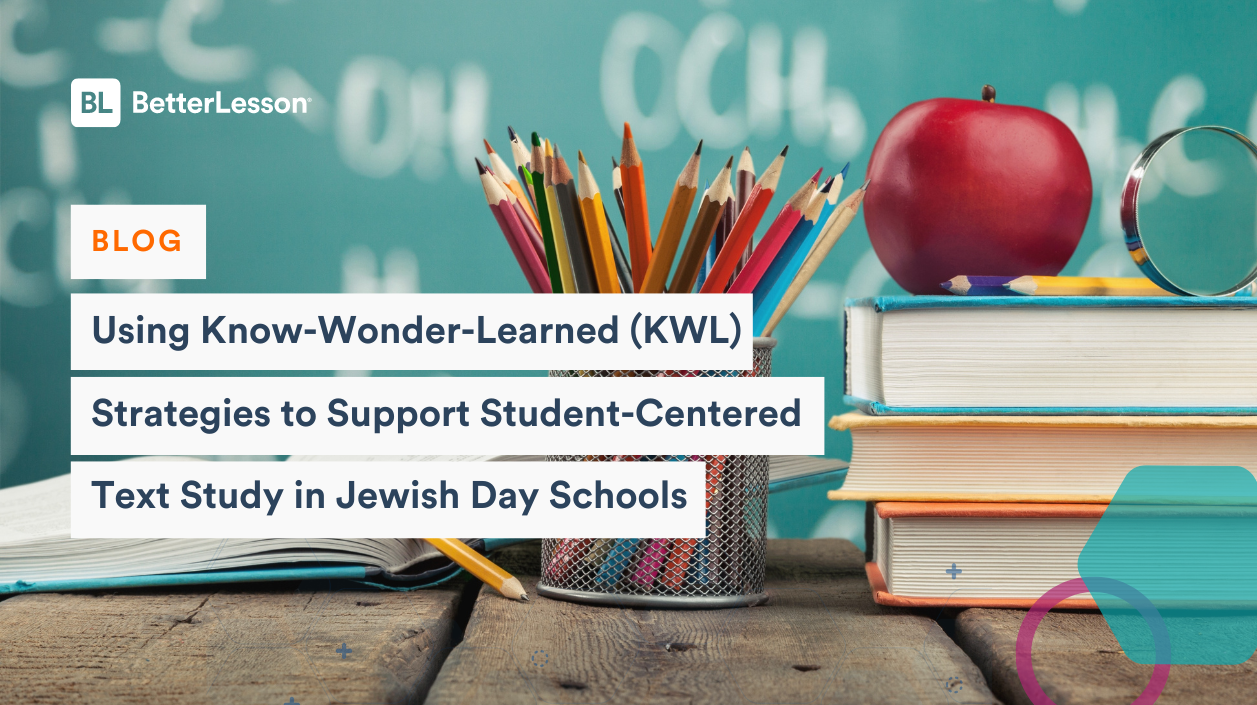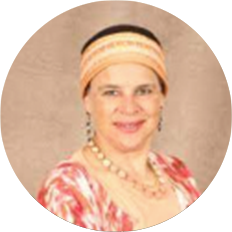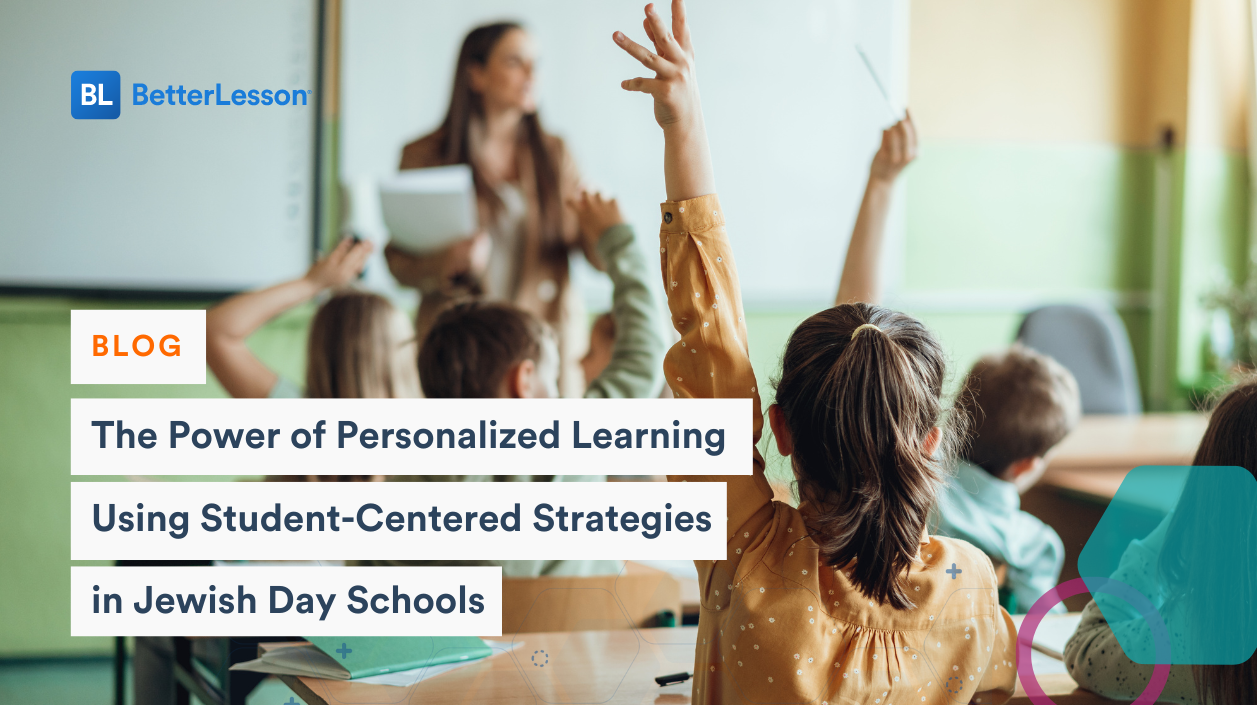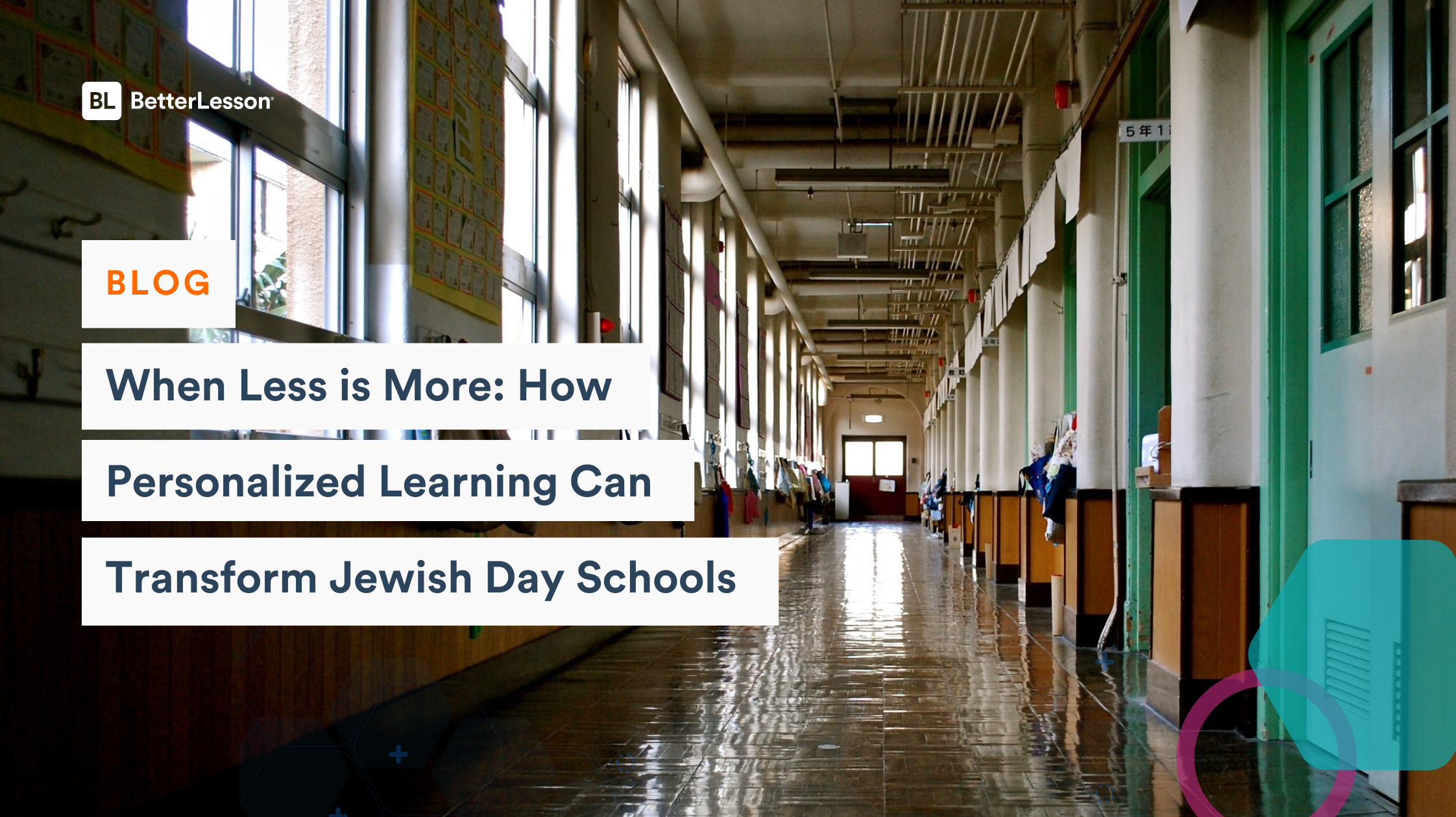One of the most prevalent challenges and pain points for Jewish Studies teachers–both new and veteran–is teaching texts. The central texts of Jewish Studies–the Hebrew Bible and the Talmud, and the classical commentaries on these texts–are written in foreign languages: Hebrew and Aramaic. Therefore, in lesson planning and instruction, the Jewish Studies teacher needs to consider student-centered content acquisition approaches and literacy skills in a second language. Creating a student-centered classroom that facilitates skill acquisition as well as engagement while also building content knowledge and values integration is a daunting task.
In working as an Instructional Coach for BetterLesson with JEI, I have found that using the KWL strategy as an instructional framework, together with elements of Tiered Vocabulary, have proven effective in providing a framework for teachers to plan lessons, implement formative and summative assessments, and to support student-centered learning and engagement. I have received feedback from teachers that these strategies have been transformative for them and highly successful with their students.
The Challenge
When I begin working with Jewish Studies participants, the challenges that are presented to me most often include:
• What is student centered learning and why is it important?
• How do I plan lessons?
• How do I get my students to care about what they are learning?
• How do I get my students to engage with the text and become more independent learners?
• How do my students develop text skills as well as higher-order thinking skills?
The first step in working with participants to understand student-centered learning and why it’s important. My participants and I reflect on how Jewish Studies is traditionally and inherently constructivist and student-centered, based on millennia-old traditions of learning with partners, grappling with texts to make meaning and ask questions, and learning from a master who is also, ideally, supposed to be a personal role model.
While participants quickly grasp that student-centered learning is philosophically foundational, it is student engagement and lesson implementation that poses the challenge. Some teachers are concerned that the work needed to master texts in Hebrew and Aramaic may prove so daunting to students that engagement and meaning-making are lost. On the other hand, teachers are also concerned that student-centered learning sacrifices content acquisition and may erode the teacher-student boundary.
The Solution – KWL
Using backwards planning, my participants and I identify the skills, content, and values that teachers want the students to have at the end of a unit. Once we’ve done this, I introduce them to the KWL strategy and explain how it is a tremendously powerful framework for both teachers and students. Before starting any unit–a group of verses or a chapter in the Hebrew Bible, a section of Talmud, or an area of Jewish law–the teacher asks the students: Tell me what you KNOW about X? Asking this question automatically provides the students with agency and draws on what they do know rather than focusing on what they don’t. It supports socio-emotional learning goals by emphasizing students’ abilities and strengths rather than deficits.
KWL – Know
After the teacher asks the “What do you KNOW” prompt, students should be given think-time and the opportunity to record their answers individually. These two implementation elements further facilitate independent thinking and engagement. The students are less likely to repeat the same answers as their peers, less likely to be intimidated, and more supported in coming up with their thoughts.
For middle and high school students, this “think time” step can easily be done individually; for younger students, pair-share may work better, especially if some students have graphomotor issues. Another cooperative learning tactic would be to have pairs share and then have each member share what the other has said with the group. This can also be done in groups of 4 then 8. The teacher can thereby integrate social-emotional goals with skill and content goals.
After “think time” the answers to the “what do you know” question need to be collated in some way–either on a Google doc or written on the board. In upper grades, having a student scribe is another great way to promote agency and allow the teacher to engage more easily with each student and their answers. Recording students’ answers creates an automatic process of collaboration between students and builds a culture of learning together rather than only from a teacher. The observable product of this exercise is a knowledge bank in which everyone can take pride and serves as both a backdrop and a springboard for learning. Actually seeing what you know, individually and as a group, is energizing in and of itself. A secondary gain for the teacher is data regarding what students know and remember from past learning.
In meetings with participants, after trying the “what do you KNOW” exercise, they are excited, surprised, and even moved.
• One 8th-grade teacher, who mindfully grapples with balancing student-centered and teacher-driven classroom pedagogy, was “pleasantly surprised” that “my students not only remembered what I had taught them earlier this year but remembered what we learned last year!” This “What do you KNOW” exercise gave her evidence of her own efficacy in the classroom, which encouraged her in her own Try/Measure/Learn cycle and to keep believing in herself and her students.
• A middle-school teacher reported that asking students what they KNOW before beginning a Jewish law unit was an “amazing thing”. “I was really blown away by how much they already knew, and they were so proud of themselves also. Each student’s response encouraged more and more hands to go up. ‘Rabbi, wait! I also know….’ The kids were cheering each other on and just wanted to share more and more. It was incredible. I’ve never seen them so excited before. And I was also able to jump right into new material because I didn’t have to review what they clearly already knew. It was a real win!” For this teacher, who explained his outcome goal as “wanting students to connect with what they’re learning,” this exercise opened a new avenue to achieving it.
• Another teacher, developed formative assessments that consistently asked students to identify Hebrew vocabulary words that they knew in verses that they were first learning. She reported that “it really lowered their anxiety. They realized that they knew more than they thought they did. They were able to tackle new things more quickly and build knowledge bridges for new vocabulary. And it also gave them a structure so they better understood the exercise’s goal.”
KWL – Want or Wonder
Asking students What do you WANT to know or What do you WONDER is another simple-yet-powerful tool for engagement, agency, and student-centered learning. This question can be directed at skill-building: Having a teacher begin to ask students to identify which skills they want to improve on or what content knowledge they want to build, or what questions they have after an initial reading of a text draws students in and gives them a voice in the learning process. It promotes buy-in and can serve as a way to personalize learning. Teachers can create choice boards based on student responses and can craft self-assessment procedures that ask students to reflect on their own progress towards the “W” they chose. This question can be the beginning of developing driving questions in a PBL unit. Participants teaching commentaries and/or secondary law sources often report that the questions that students raise in “what do I WANT to know” or “what do I WONDER” are questions that great rabbis have already raised, which gives students a sense of pride and spurs more questions.
• A second-grade teacher reported being “blown away” by her students’ questions during this part of the strategy.
• A teacher working with weaker students choked up when she reported how empowering the process of identifying personal “what do I want to know” and the subsequent self-assessment process and growth curve was for her students.
KWL – Learned
Finally, using “what have I LEARNED” can be a template for assessments and data points for teachers and students. In asking students to think about “what have I learned”, there is both opportunity and framework for review and synthesis before an actual summative assessment.
• One teacher asked his students to generate questions for other students to answer as a way to demonstrate what they had learned. He was extremely impressed by the depth and breadth of the student-generated questions, and the exercise provided important insight into the student’s abilities and how he, the teacher, had achieved his objectives.
• A high-school teacher, using the KWL strategy as part of her PBL unit, asked students to demonstrate what they had learned in a Socratic seminar, thus spurring further conversation about what had been learned by the class. “Asking the students ‘what did you learn’ and having them compare their response with the earlier ‘what do I know’ and ‘what do I want to know’ was amazing!” said a teacher. “The students felt such a sense of accomplishment and that their efforts really paid off.”
Teachers in JEI who teach the Hebrew Bible, Talmud, and Jewish law, and who use Hebrew and Aramaic texts struggle to balance student-centered learning and engagement with skill-building and content acquisition. There is also the underlying issue of meaning-making and values integration underlying what goes on in the Jewish Studies context.
Using KWL as a strategy draws an ancient educational philosophy and brings it into the 21st-century classroom. It gives teachers a framework for student-centered learning that supports multiple goals, including vocabulary and content acquisition, critical thinking, SEL and collaboration, and increasing student agency. Based on the feedback from my participants, I have found it to be a very powerful and effective strategy.








